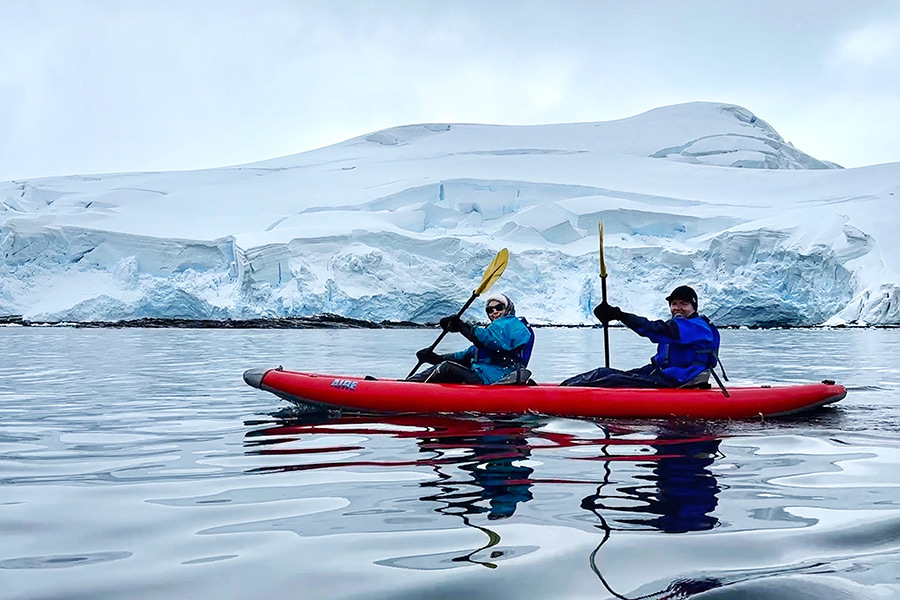Nestled below Disko Island’s 1,000-metre mountains, we pull into port in a beautifully sheltered natural harbour. The place was aptly named Godhavn (“Good Harbour”) in Danish, while its Greenlandic name “Qeqertarsuaq” simply means “The Big Island”.
For most of Greenland’s modern history, Godhavn was the political and economic capital of North Greenland (while Godthåb, now Nuuk, served this role in Southern Greenland). Its importance was due to the vast economic activity generated by whaling in Disko Bay, the preeminent Arctic industry since the 16th Century. As the whaling industry collapsed in the early 1900s, Godhavn lost its political status as all government functions moved south to Godthåb/Nuuk, and the town was forced to reinvent itself, changing its name to Qeqertarsuaq in 1979 . Today, hunting and fishing are the main industries in Qeqertarsuaq, while tourism is becoming increasingly important. Ferries arrive in the town daily in summer from around Disko Bay, while in winter, access is only by helicopter from nearby Ilulissat.
Qeqertarsuaq’s sweeping red-and-black basalt mountains are radically different to the rolling granite hills which characterize much of Greenland, and provide a much richer soil. Despite being situated well above the Arctic Circle, this rich volcanic soil and the area’s mild microclimate make it much more green and lush compared to the rest of the country. Locals from all over Disko Bay come to the island in summer to hunt and collect angelica, herbs and mushrooms, and the stunning rock formations and black sand beaches attract visitors from all over the world. The town itself is typically Greenlandic, with quaint multicoloured homes, a splendid museum, and the unique octagonal church nicknamed 'God's Inkpot' (built in the Norwegian stave style). With excellent hiking opportunities, friendly locals, and a fascinating place in regional history, Qeqertarsuaq has a lot to offer.
On the afternoon of our day on Disko Island, we will reposition our vessel slightly to the east and launch our fleet of Zodiacs to explore the coast of Kuannit. Kuannit means 'Angelica' in Greenlandic, referring to the herb which grows abundantly on the rich south-facing slopes of the island. This stretch of coastline is one of Greenland's best kept secrets; with lush greenery dripping with water from mountain springs, spectacularly weird basalt rock formations riddled with caves and waterfalls, and plenty of sapphire-blue icebergs, this section of coast is one of the most spectacular in the Arctic.
From Kuannit, we will set a northerly course towards Uummannaq.



























